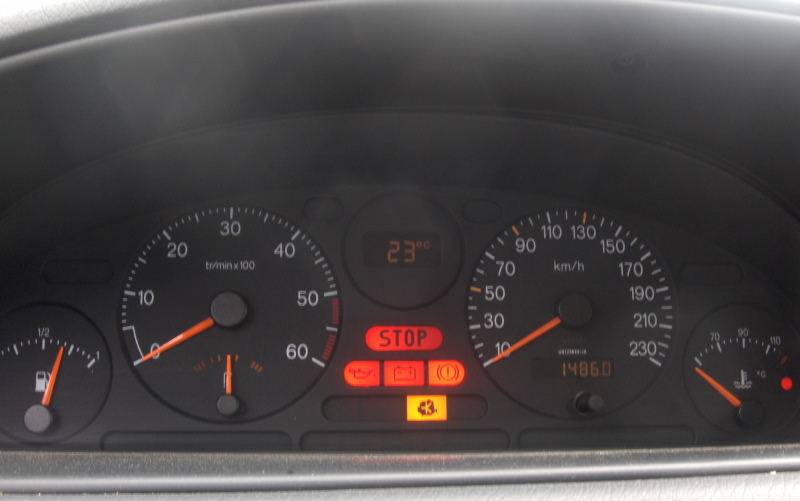What is a dashboard warning light?
Modern vehicles have several electronic sensors that monitor the status of your car. When a sensor detects irregular activity in your car, a warning light will appear on your dashboard. The type of warning light that appears can help with diagnosing faults in your vehicle.
When one of your car’s sensors is triggered, it will store a fault code, which can be read with an electronic diagnostic tool. At Grimmer Motors, we are able to quickly read your fault codes and diagnose the problem that is causing a dashboard warning light to show. We can then provide quality advice on how the problem can be fixed.
What does each warning light mean?

1. Check Engine Light:
The check engine light will illuminate if one of your engine’s sensors detects a fault.
A common cause of the check engine light appearing is an incorrect air/fuel ratio. Engines use a mixture of air and fuel to create energy and power the vehicle. If too much air or fuel is entering the engine, the check engine light will illuminate. There are several causes for an incorrect air/fuel ratio. Some of these include:
- The fuel cap is loose, or missing,
- The spark plugs are worn and in need of replacement.
- The oxygen sensor is malfunctioning.
- The throttle position sensor is faulty
- The Manifold Absolute Pressure Sensor – MAP sensor is faulty
- The mass airflow sensor is malfunctioning.
There are many other different things that can cause the check engine light to turn on. We recommend that you get the Check Engine warning light diagnosed by a mechanic as soon as possible, as the fault could potentially cause damage to your engine over time.
2. Airbag Light:
Airbags are controlled by an Airbag Electronic Control Unit (Airbag ECU). The role of the airbag ECU is to monitor several sensors so that the airbag can be deployed when needed. Common causes of the airbag light illuminating include:
- Corrosion in connections / wiring.
- Damaged connections due to items being put under car seats.
- Interference with seatbelt sensors.
Airbags are a crucial safety component in modern vehicles, therefore it is important to get your airbag light checked. Additionally, you may risk failing your next WOF if your vehicle’s airbag light is on.
3. ABS Light:
Your car’s Anti-Lock Braking System (ABS) controls each wheel when your vehicle is braking to prevent them from locking up or skidding. This process is monitored by several sensors. Common causes of the ABS light being on include:
- Malfunctioning or dirty sensors.
- A loss of hydraulic pressure in the braking system (potentially caused by a leak).
- Low brake fluid in the brake fluid reservoir
- The handbrake/footbrake is not fully released.
A loss of hydraulic pressure increases the risk of brake failure, particularly at high speeds. If your ABS light is on, you should get it diagnosed sooner rather than later.
4. Traction Control Light:
Traction control helps prevent a car’s wheels from spinning unnecessarily and therefore provides the driver with safer control of the vehicle. The traction control light can be triggered if any of the following components are malfunctioning:
- Traction Control System (TCS) or Electronic Stability Control (ESC) computer
- Wheel speed sensors
- Solenoids
- The hydraulic modulator assembly
- The electric pump
- The accumulator
- Brake fluid
- Brake components
- Throttle position and load sensor data (from engine computer)
5. Engine Temperature Light:
Your car’s engine reaches very high temperatures, relying on the radiator and cooling system to prevent overheating. If your cooling system is not able to provide the engine with coolant, the engine temperature light will be triggered, warning the driver that their engine is reaching a critical temperature.
Causes of an overheating engine include:
- Leaks in the radiator, hoses, or other cooling system components.
- Stale coolant.
- A malfunctioning engine thermostat.
- Clogging or blockages in the radiator.
- A buildup of heat caused by exhaust problems.
6. Transmission Light:
In automatic vehicles, the Automatic Transmission Electronic Control Unit controls gear shifts to make sure the vehicle drives and changes gears smoothly. This unit monitors many different sensors and actuators to keep the transmission system functioning correctly. If one of these sensors stops working correctly, the transmission light may appear.
Dashboard warning light Diagnostics in Hamilton
At Grimmer Motors, we have a huge range of tools that can aid us in diagnosing the warning light(s) in your vehicle. A quick diagnosis allows us to perform fast, accurate, and stress-free repairs on your car, saving you time and money.
For reliable vehicle diagnostics in Hamilton, contact Grimmer Motors today.

